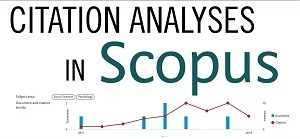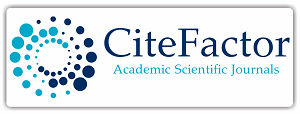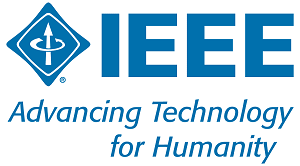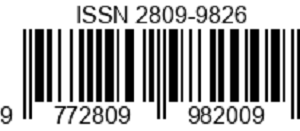A Stunting Risk Model Based on Children's Parenting Style
Keywords:
Stunting, Parenting Style, Nutritional StatusAbstract
The Global Nutrition Report (2020) stated that stunting is a nutrional problem in children and there are 7,8 million stunted children out of 23 million children in the world. The prevalence of stunting in Indonesia is 24.4%. WHO targeted less than 20% stunting cases in 2024 globally. Parenting styles for toddlers contribute to stunting. Toddlers immunization status and the exclusive breast-feeding are examples of parenting styles. This study aimed to analyze risk factors influencing stunting based on parenting. Case Control approach was used in this study. The sample was taken by using purposive sampling and mothers have stunted 1-5 years old children as case group). Comparison Ratio 1:1 with the control group. Statistical analysis was carried out using the chi-square test (2x2), with an expected value of more than 20%, the Fisher's exact test is used.Multivariate analysis with logistic regression analysis, measuring the effect of a namely the stunting risk assessment.The nominal scale 2 categories, stunting and not stunting. Risk factors of stunting resulted from logistic regression analysis (p>0.05) are nutritional status, exclusive breastfeeding, complementary feeding, immunization status, infectious diseases, and low birth weight. Stunting can be stopped by improving child feeding, improving women's nutrition and household sanitation.
Downloads
References
WHO U. Global nutrition targets 2025: breastfeeding policy brief (WHO/NMH/NHD14. 7). Geneva World Heal Organ. Published online 2014.
Yekti R. SDGs (Sustainable Development Goals) dan 1000 Hari Pertama Kehidupan. Published online 2020.
Ardianto ET, Elisanti AD, Husin H. Arduino and Android-Based Anthropometric Detection Tools for Indonesian Children. In: 2nd International Conference on Social Science, Humanity and Public Health (ICOSHIP 2021). Atlantis Press; 2022:254-259.
Huriah T, Nurjannah N. Risk factors of stunting in developing countries: A scoping review. Open Access Maced J Med Sci. 2020;8(F):155-160.
Azmy U, Mundiastuti L. Konsumsi Zat Gizi pada Balita Stunting dan Non-Stunting di Kabupaten Bangkalan Nutrients Consumption of Stunted and Non-Stunted Children in Bangkalan. Amerta Nutr. Published online 2018:292-298.
Siswati T. Stunting. Published online 2018.
Wati EK, Wahyurin IS, Sari HP, Zaki I, Dardjito E. Stunting Incidence in Infant Aged (0-24 months) Related to Mother’s history during Pregnancy in Stunting Locus Villages in Banyumas Regency. KEMAS J Kesehat Masy. 2022;17(4).
Rahmawati L, Sriwahyuni S, Putri ES. FACTORS THAT AFFECT THE INCIDENCE OF STUNTING IN TOODDLERS AGED 6-59 MONTHS. Morfai J. 2022;2(1):51-60.
Ri K. Laporan hasil riset kesehatan dasar (Riskesdas) Indonesia tahun 2018. Jakarta Badan Penelit dan Pengemb Kesehat Kemenkes RI. Published online 2018:5-10.
Akombi BJ, Agho KE, Hall JJ, Wali N, Renzaho AMN, Merom D. Stunting, wasting and underweight in sub-Saharan Africa: a systematic review. Int J Environ Res Public Health. 2017;14(8):863.
Martorell R. Improved nutrition in the first 1000 days and adult human capital and health. Am J Hum Biol. 2017;29(2):e22952.
Pangaribuan IA, Wau H. Faktor-Faktor Yang Berhubungan Dengan Kejadian Stunting Pada Balita Diwilayah Kerja Puskesmas Medan Deli Tahun 2018. J Kesehat Masy dan Lingkung hidup. 2019;4(1):34-41.
Handayani T. FAMILY FOOD SECURITY IMPROVEMENT BY USING POSITIVE DEVIANCE APPROACH. Published online 2021.
Sánchez C, Franco L, Regal P, Lamas A, Cepeda A, Fente C. Breast milk: a source of functional compounds with potential application in nutrition and therapy. Nutrients. 2021;13(3):1026.
Tello B, Rivadeneira MF, Moncayo AL, et al. Breastfeeding, feeding practices and stunting in indigenous Ecuadorians under 2 years of age. Int Breastfeed J. 2022;17(1):19.
Chanda H. Feeding practices and stunting in children aged 0-23 months in Zambia: analysis of the Zambia demographic and health survey 2013-14 data. Published online 2020.
Ode D, Murti B, Budihastuti UR. Correlation between Low Birth Weigth and Stunting in Children Under Five: Meta Analysis. J Matern Child Heal. 2022;7(5):498-509.
Ernawati A. Gambaran penyebab balita stunting di desa lokus stunting Kabupaten Pati. J Litbang Media Inf Penelitian, Pengemb dan IPTEK. 2020;16(2):77-94.
Souisa GV, Rehena Z, Joseph C. PKM IBU DAN BALITA STUNTING DI PUSKESMAS PERAWATAN WAAI, KABUPATEN MALUKU TENGAH. J Pengabdi Kpd Masy. 2021;5.
Ayu MS. Efektivitas Pemanfaatan Buku Kesehatan Ibu dan Anak Sebagai Media Komunikasi, Edukasi dan Informasi. J Kedokt Ibnu Nafis. 2019;8(2):9-17.
Agustiawan IPR, Pitoyo J. Hubungan Frekuensi Kunjungan ke Posyandu dengan Status Gizi Balita. Prof Heal J. 2020;2(1):9-16.
Situmeang NSD, Sudaryati E. Correlation of Parenting and Nutrient Intake with Stunting in Children 24-59 Months. Britain Int Exact Sci J. 2020;2(1):280-285.
Smith C, SMITH JM. Suffer the Children. Booklist. 2018;115(6):63-64.
Published
How to Cite
Issue
Section
Copyright (c) 2023 Mayang Sari Ayu, Meri Susanti, Tezar Samekto Durungan

This work is licensed under a Creative Commons Attribution 4.0 International License.





























